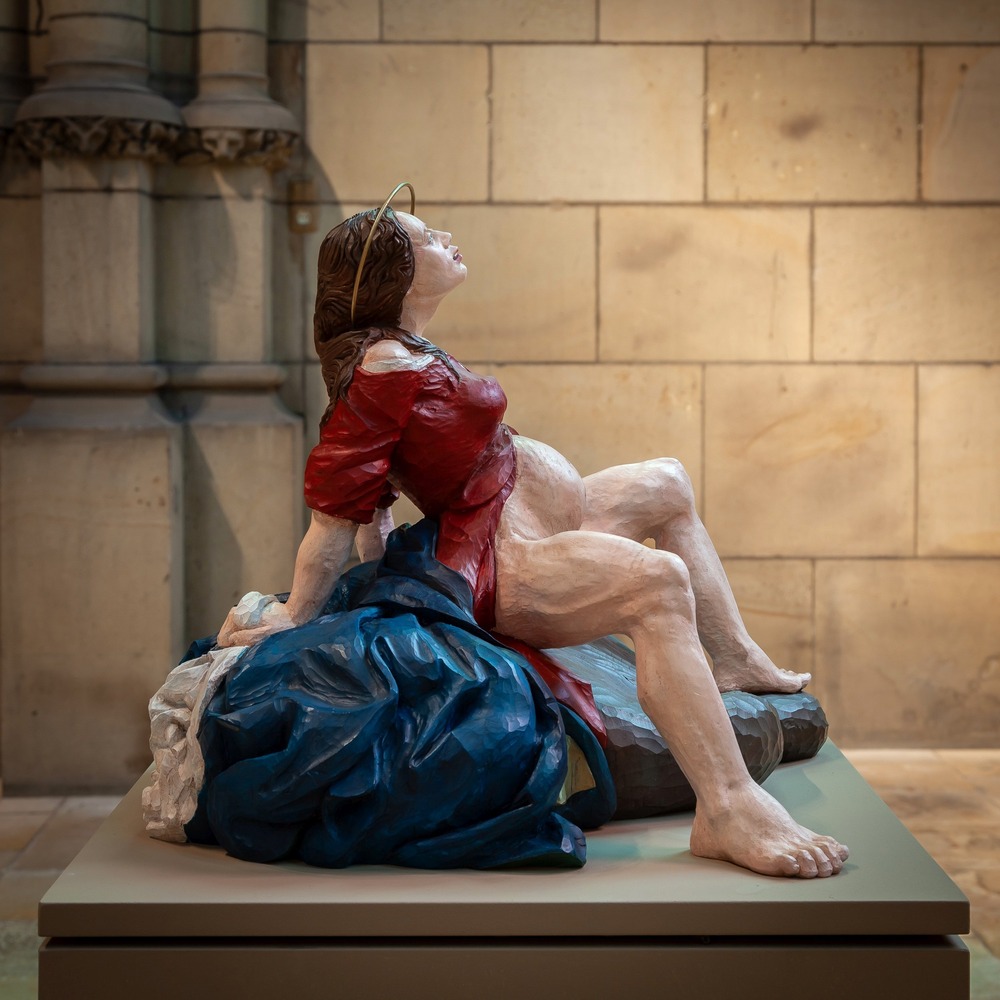
A sculpture depicting the Virgin Mary giving birth to Jesus designed by Austrian artist Esther Strauss is seen in an undated photo. The sculpture was scheduled to be on display in St. Mary's Cathedral in Linz, Austria, for three weeks when it was beheaded by unknown vandals early in the morning July 1, 2024. The artwork drew criticism from some Catholics who said it was blasphemous. (OSV News/ courtesy Ulrich Kehrer, St. Mary's Cathedral in Linz)
St. Mary's Cathedral in Linz made headlines around the world as a controversial sculpture of Mary displayed inside the church was beheaded July 1 by unknown vandals.
The sculpture, depicting the Virgin Mary giving birth to Jesus designed by Austrian artist Esther Strauss, was scheduled to be exhibited in the cathedral for three weeks. The work has drawn criticism from some Catholics who said it was blasphemous.
"The intolerance, backwardness and lack of enlightenment in the Catholic Church is frightening," Theresa Limberger, who spent 200 hours carving the statue based on Strauss' concept, commented to Austrian media ORF.
The controversy, however, was expected.
"There is a guest book to give people the opportunity to write down their thoughts about it. There were definitely a lot of verbally aggressive and disturbing notes," Martina Resch, co-initiator of the project, told ORF.
The artists also expected negative feedback. "I was prepared for verbal statements. However, I would not have expected that the work with which I spent so much time would be destroyed," Limberger said.
The sculpture had been on view at Austria's largest cathedral as part of the DonnaStage art installation project on women's roles, family images and gender equality, the Linz Diocese said in a statement. It added that the incident, which occurred on July 1, had been reported to police.
Cardinal Gerhard Müller, former prefect of what is now the Dicastery for the Doctrine of the Faith, commented on the German news site kath.net that "if a pictorial representation of the birth of Jesus causes offense among the faithful and causes division in the church, the aim of Christian and especially sacred art has been missed."
Advertisement
Alexander Tschugguel, an Austrian traditionalist Catholic responsible for the so-called "Pachamama" act of vandalism during the Vatican's 2019 Amazon synod, in a July 3 social media post praised Cardinal Müller for commenting on the incident: "I am happy that Cardinal Müller again defends the Church and especially our Lady!" he wrote.
The sculpture showed Mary sitting on a rock and giving birth. The diocese said in a statement that it referred to the Nativity scene in the cathedral.
The episcopal vicar for education, art and culture in the Linz Diocese, Father Johann Hintermaier, condemned the beheading of the statue.
"We were aware that we were also provoking debate with this installation. If we have hurt people's religious feelings, we are sorry, but I strongly condemn this violent act of destruction, the refusal to engage in dialog and the attack on the freedom of art," the priest said in a diocesan statement.
The statement said Strauss also condemned the attack. "Most portraits of the Virgin Mary were made by men and have therefore often served patriarchal interests," she said, adding that "Mary gets her body back" in her artwork.
Resch, who is a theologian at the Catholic Private University of Linz, said in the diocesan statement that Strauss' sculpture "is a very poetic work that shows the natural birth of Jesus. Mary is shown in her vulnerability but also in her strength."
She said that from a theological perspective, "the work is a strong affirmation of God's incarnation." The statement added she was deeply affected by the "brutality towards the female figure."




